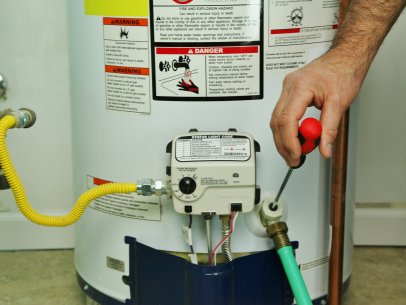Steps on How to Maintain Your Home's Hot Water System ProperlySteps to Extend the Life of Your Home's Hot Water System Through Maintenance
Schedule And PricingThis post down below pertaining to Water Heater Maintenance Tips You Can't Afford to Forget is really interesting. Read it for yourself and figure out what you think of it.

Warm water is important for everyday convenience, whether it's for a rejuvenating shower or washing recipes. To ensure your warm water system runs successfully and lasts longer, routine upkeep is essential. This short article gives sensible suggestions and insights on exactly how to keep your home's hot water system to prevent disturbances and costly repair services.
Intro
Maintaining your home's hot water system could seem difficult, however with a couple of simple steps, you can ensure it operates smoothly for several years ahead. This overview covers everything from comprehending your warm water system to do it yourself maintenance suggestions and knowing when to contact expert aid.
Relevance of Maintaining Your Hot Water System
Routine upkeep not just expands the lifespan of your warm water system but also ensures it runs successfully. Disregarding upkeep can lead to lowered efficiency, higher energy expenses, and even early failing of the system.
Signs Your Hot Water System Needs Maintenance
Understanding when your hot water system needs interest can stop significant concerns. Keep an eye out for indicators such as irregular water temperature level, strange sounds from the heating unit, or rustic water.
Understanding Your Warm Water System
Prior to diving into maintenance jobs, it's valuable to understand the basic parts of your warm water system. Generally, this includes the hot water heater itself, pipelines, anode rods, and temperature level controls.
Month-to-month Maintenance Tasks
Normal regular monthly checks can help capture small problems before they rise.
Purging the Water Heater
Purging your water heater removes debris build-up, boosting efficiency and prolonging its life.
Monitoring and Replacing Anode Rods
Anode poles stop rust inside the storage tank. Examining and changing them when worn is essential.
Inspecting and Adjusting Temperature Level Settings
Adjusting the temperature level settings makes certain ideal performance and safety and security.
DIY Tips for Upkeep
You can carry out numerous maintenance jobs on your own to keep your warm water system in leading condition.
Looking for Leakages
Frequently evaluate pipes and connections for leakages, as these can lead to water damage and greater bills.
Evaluating Stress Alleviation Valves
Examining the pressure relief valve guarantees it operates correctly and stops too much pressure accumulation.
Shielding Pipes
Shielding hot water pipes decreases warmth loss and can conserve power.
When to Call a Professional
While DIY upkeep is valuable, some concerns call for professional knowledge.
Complicated Concerns Requiring Professional Assistance
Instances consist of significant leakages, electrical troubles, or if your water heater is regularly underperforming.
Routine Expert Upkeep Conveniences
Specialist upkeep can consist of thorough evaluations, tune-ups, and ensuring compliance with security requirements.
Final thought
Routine maintenance of your home's warm water system is necessary for performance, long life, and price financial savings. By adhering to these pointers and recognizing when to look for expert assistance, you can make sure a trustworthy supply of warm water without unanticipated disturbances.
How to Maintain an Instant Hot Water Heater
Before tinkering with your hot water heater, make sure that it’s not powered on. You also have to turn off the main circuit breaker and shut off the main gas line to prevent accidents. Also turn off the water valves connected to your unit to prevent water from flowing into and out of the appliance. 2. When you’re done, you have to detach the purge valves’ caps. These look like the letter “T” and are situated on either side of the water valves. Doing so will release any pressure that has accumulated inside the valves while at the same time avoid hot water from shooting out and burning your skin. 3. When the purge valves’ caps are removed, you have to connect your hosing lines to the valves. Your unit should have come with three hoses but if it didn’t, you can purchase these things from any hardware or home repair shops. You can also get them from retail stores that sell water heating systems. Read the user’s manual and follow it to complete this task properly. When the hosing lines are connected, open the purge port’s valves. 4. You should never use harsh chemical cleaners or solutions when cleaning your unit. Make use of white vinegar instead. It should be undiluted and you’ll probably use about 2 gallons. 5. Now flush your water heater. This task should probably take about 40 minutes. We can’t give you specific directions for this because the procedure is carried out depending on the type, model and brand of your heater. With that being said, refer to the user’s manual. 6. When you’re done draining the unit, you have to turn off the purge port valves again. Remove the hosing lines that you earlier installed on each of the water valves. Put the valve caps (purge port) back in their respective places and be very careful so as not to damage the rubber discs that are found inside these caps. 7. Now that everything’s back in place, check your user’s manual again to find out how to reactivate your water heating system. 8. Once it is working, turn one of your hot water faucets on just to let air pass through the heater’s water supply pipes. Leave the tap on until water flows smoothly out of it. https://www.orrplumbing.com/blog/2014/september/how-to-maintain-an-instant-hot-water-heater/

I found that piece on Water Heater Maintenance Tips You Can't Afford to Forget while doing research the web. Are you aware of somebody who is involved in the niche? Please feel free to share it. I take joy in reading our article about How to Maintain Your Water Heater & Prolong its Life.
Click Here